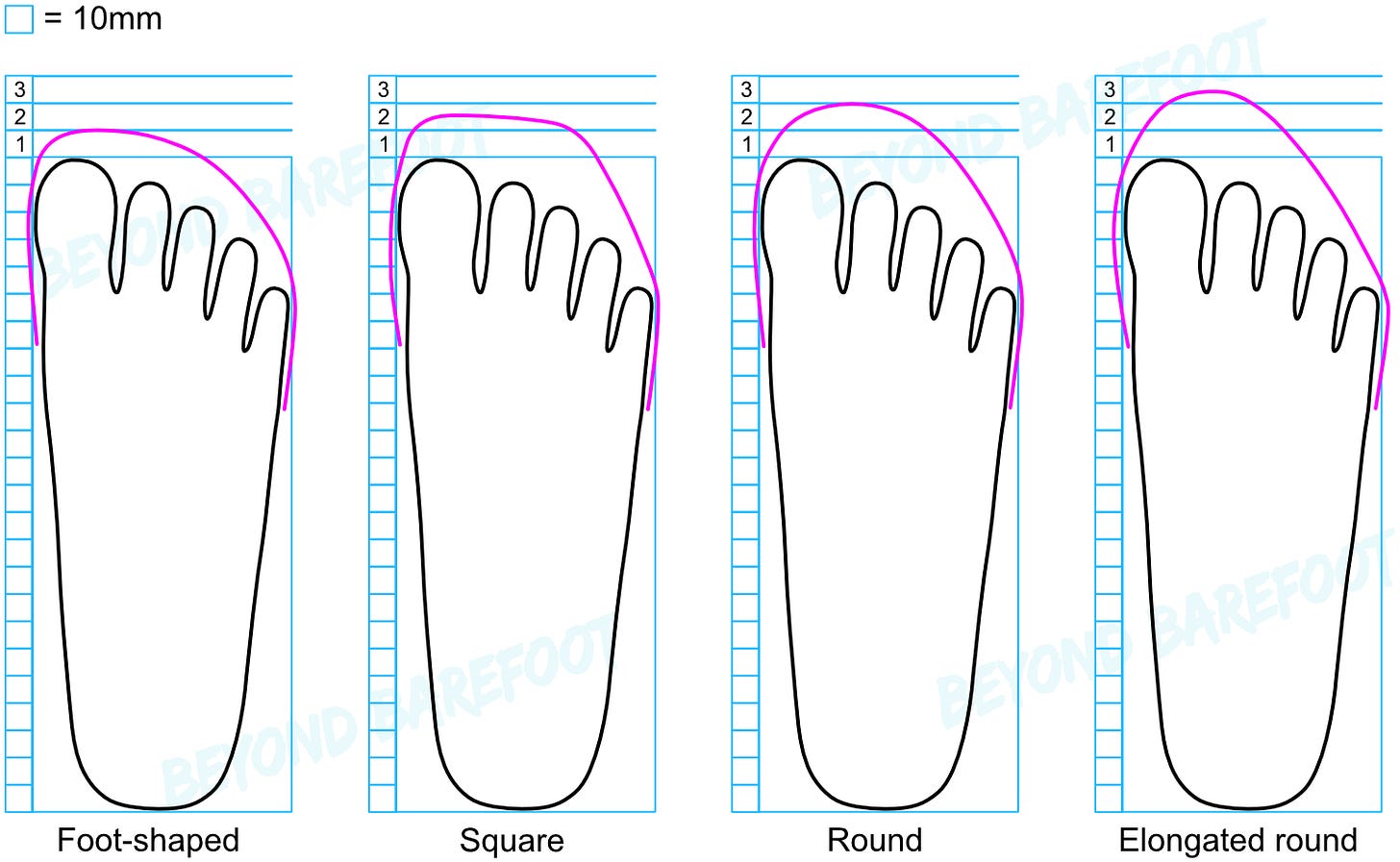(Updated 4/9/2025)
Barefoot shoes are gaining more popularity every year, with new brands popping up all the time boasting shoes with foot-shaped toe boxes to allow room for the toes to splay. While I’m glad to see the number of people increasing who are embracing footwear that accommodates their toes, one thing many foot-shaped shoe proponents don’t seem to realize is that it’s entirely possible for shoes to have enough toe space while not actually looking like feet.
This might be a controversial statement to some barefoot shoe enthusiasts, but hear me out.
There’s a common conception that you should have very little extra space at the end of your shoes to reduce the likelihood of tripping. The amount I often see barefoot shoe brands recommend is around 10mm, and sometimes less. The thing is, depending on the style and construction of the shoe, you can actually have a lot more space than that (20-30mm or more) and be perfectly fine. This opens the door for a wide range of possible toe box shapes, while still maintaining the width needed for the toes. In the footwear industry this additional space is known as “action length.”
Below are several illustrations showing different feet wearing foot-shaped toe boxes vs. various shapes that become possible by increasing the length of the shoe. All the feet in the illustrations measure 240mm long but come in an assortment of widths and shapes.
Toe box shapes on an average width foot
Here are a few different toe box shapes on an average width foot. You can see that the more narrow the tip of the shoe is, the longer it needs to be. The “foot-shaped” toe box has 10mm action length while the others have between 15-25mm.
Wide width foot
Below is an overall wide width foot (meaning it’s wide both in the heel and the ball of the foot). The toe boxes have broadened compared the examples above. Some have also gotten a little longer in order to maintain the desired shape. The action length on the nonfoot-shaped toe boxes now ranges from 20-30mm.
Combination width foot with a wide toe splay
Next is a combination width foot (i.e., wide forefoot and narrow heel) with a wide toe splay. The toe boxes continue to expand in width and sometimes length.
Extra wide width foot
Once you get into extra wide foot territory, the toe box broadens much more to match. While it is challenging to create a dainty shape for such a wide foot, we are still not limited to only foot-shaped shoes. Keep in mind that there is a limit to how long the toe box can be before it starts to look a little ridiculous. It would be difficult to design a pointed toe shape for a very large, very wide foot; in these cases it’s generally recommended to stick with rounder or squarer shapes.
What about tripping?
So, as you can see, in none of the illustrations above are the toes being squeezed together, despite the distinctly un-footlike shapes. But how do you prevent tripping if you have so much extra space at the end of your shoes? This is where toe spring comes into play.
If you have an interest in foot health, you might have read that toe spring can be detrimental to our feet because it places the foot in an unnatural position, which can weaken the muscles on the top of the foot and overstretch the plantar fascia, potentially leading to the development of plantar fasciitis.
But really, the problem comes down to the way companies are using toe spring. Most shoes have toe spring that begins at the ball of the foot, where the foot bends, forcing the toes into a constant upward-pointing position. Even many so-called barefoot or “zero drop” shoe brands use toe spring in this way.
However, there is a better alternative. If you add toe spring only past the point where the toes end, you can keep the foot in a neutral position while also minimizing the likelihood of tripping in a longer shoe. This creates endless possibilities for much more refined toe box shapes. It seems like a win-win solution, and I’m not sure why this isn’t a common practice in the industry.

Now, there may be people out there who prefer the look of foot-shaped shoes, but I’m going to hazard a guess that the vast majority do not. The fact is, many people are turned off by wide toe box shoes because they think they look “funny.” What if we can have elegant shoes while also being kind to our feet? I think that’s something worth aiming for.
For a continued discussion on toe box shapes, read more here.









